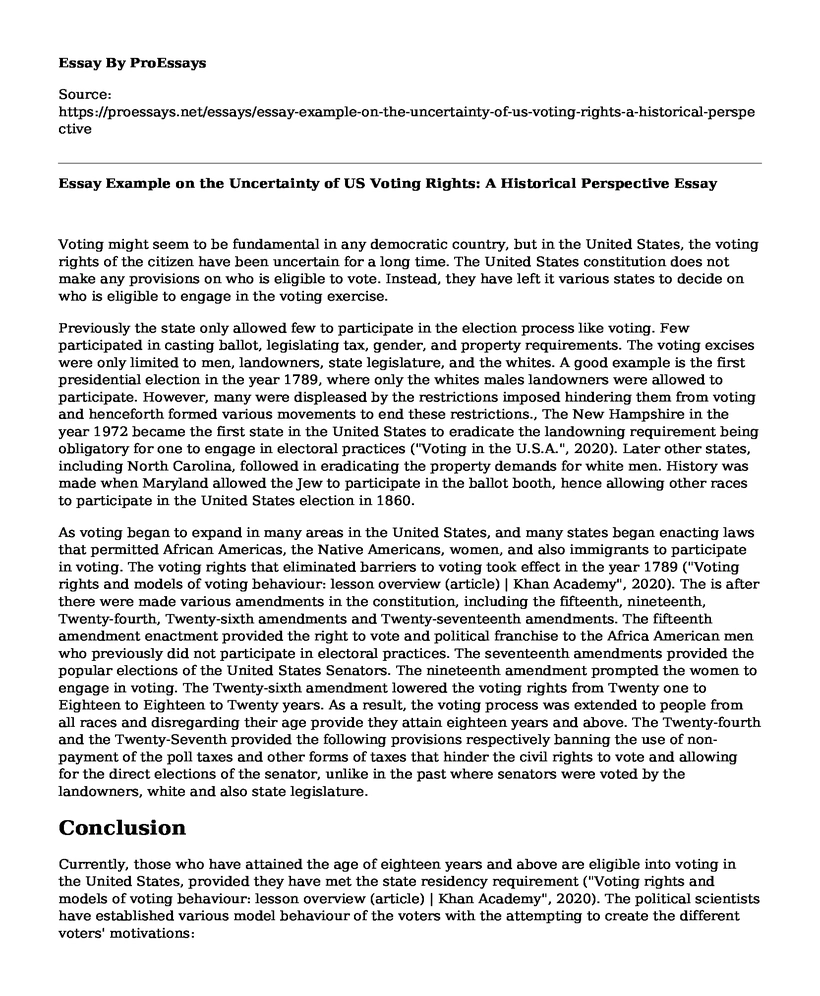Voting might seem to be fundamental in any democratic country, but in the United States, the voting rights of the citizen have been uncertain for a long time. The United States constitution does not make any provisions on who is eligible to vote. Instead, they have left it various states to decide on who is eligible to engage in the voting exercise.
Previously the state only allowed few to participate in the election process like voting. Few participated in casting ballot, legislating tax, gender, and property requirements. The voting excises were only limited to men, landowners, state legislature, and the whites. A good example is the first presidential election in the year 1789, where only the whites males landowners were allowed to participate. However, many were displeased by the restrictions imposed hindering them from voting and henceforth formed various movements to end these restrictions., The New Hampshire in the year 1972 became the first state in the United States to eradicate the landowning requirement being obligatory for one to engage in electoral practices ("Voting in the U.S.A.", 2020). Later other states, including North Carolina, followed in eradicating the property demands for white men. History was made when Maryland allowed the Jew to participate in the ballot booth, hence allowing other races to participate in the United States election in 1860.
As voting began to expand in many areas in the United States, and many states began enacting laws that permitted African Americas, the Native Americans, women, and also immigrants to participate in voting. The voting rights that eliminated barriers to voting took effect in the year 1789 ("Voting rights and models of voting behaviour: lesson overview (article) | Khan Academy", 2020). The is after there were made various amendments in the constitution, including the fifteenth, nineteenth, Twenty-fourth, Twenty-sixth amendments and Twenty-seventeenth amendments. The fifteenth amendment enactment provided the right to vote and political franchise to the Africa American men who previously did not participate in electoral practices. The seventeenth amendments provided the popular elections of the United States Senators. The nineteenth amendment prompted the women to engage in voting. The Twenty-sixth amendment lowered the voting rights from Twenty one to Eighteen to Eighteen to Twenty years. As a result, the voting process was extended to people from all races and disregarding their age provide they attain eighteen years and above. The Twenty-fourth and the Twenty-Seventh provided the following provisions respectively banning the use of non-payment of the poll taxes and other forms of taxes that hinder the civil rights to vote and allowing for the direct elections of the senator, unlike in the past where senators were voted by the landowners, white and also state legislature.
Conclusion
Currently, those who have attained the age of eighteen years and above are eligible into voting in the United States, provided they have met the state residency requirement ("Voting rights and models of voting behaviour: lesson overview (article) | Khan Academy", 2020). The political scientists have established various model behaviour of the voters with the attempting to create the different voters' motivations:
- The retrospective voting which describes voting basing on candidature political party and event record in the office they previously held.
- The party line voting is describing the consistently voting candidate of the same party in all the government levels.
- The prospective voting describes the voting based on how citizens thinking about how the candidature they elect, will perform in the office.
- And the rational choice theory where it describes individual voting in their best interest, supporting a candidate with whom they will get favourable outcomes if elected.
References
Voting in the U.S.A. Encyclopedia Britannica. (2020). Retrieved 1 May 2020, from HYPERLINK "https://www.britannica.com/story/voting-in-the-usa" https://www.britannica.com/story/voting-in-the-usa.
Voting rights and models of voting behavior: lesson overview (article) | Khan Academy. Khan Academy. (2020). Retrieved 1 May 2020, from https://www.khanacademy.org/humanities/us-government-and-civics/us-gov-political-participation/us-gov-voting-rights-and-models-of-voter-behavior/a/lesson-summary-voting-rights-and-models-of-voting-behavior.
Cite this page
Essay Example on the Uncertainty of US Voting Rights: A Historical Perspective. (2023, Jun 11). Retrieved from https://proessays.net/essays/essay-example-on-the-uncertainty-of-us-voting-rights-a-historical-perspective
If you are the original author of this essay and no longer wish to have it published on the ProEssays website, please click below to request its removal:
- Research Paper on Ethical and Legal Issues in Clinical Supervision
- Essay Sample on International Law and Human Rights
- Essay Example on Patient Protection and Affordable Care Act (ACA)
- Essay Example on Women's Health: Ensuring Non-Discriminatory Care & Accessibility
- Essay Sample on Internet Censorship in China: Government Capacity Tested
- 9/11 Attack: Conspiracy Theories & Causes - Essay Sample
- Why Not All Terrorists Should Be Charged - Essay Sample







